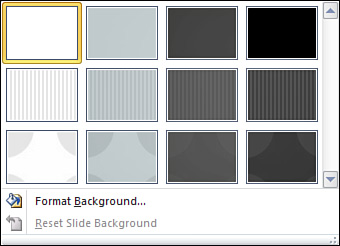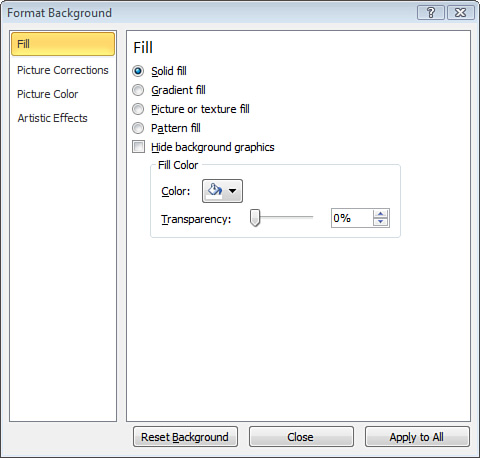You can further customize your theme by applying,
removing, and modifying its background. In addition to specific color
backgrounds, you can also add special background effects such as
shading, patterns, textures, and pictures to your presentation.
Applying a Background Style
Applying a new background style is an easy way to change the appearance of your presentation.
Applying a New Background Style
To apply a background style to your presentation, follow these steps:
1. | On
the Design tab, click the Background Styles button. A gallery displays
with 12 possible background styles designed to work with your
presentation theme (see Figure 1).

|
2. | Pause over each style to preview it on your open slide. |
3. | Click your preferred style to apply it automatically to your presentation.
|
Customizing a Background
If none of the background styles suits your needs,
you can customize a background style. To do so, select Format
Background in the gallery to open the Format Background dialog box, as
shown in Figure 2.

The
Format Background dialog box is nearly identical to the Format Shape
dialog box. Select your background preferences in this dialog box, and
click the Apply to All button. The new background displays on your
presentation slides, overriding the theme’s background.
Omitting Background Graphics
If you want to omit the background graphics included
with the template you applied to your presentation, click the Hide
Background Graphics check box on the Design tab. For example, clicking
this check box on a presentation whose theme or template includes
pictures or shapes removes these objects but retains the original
colors.
Resetting a Background
If you customize your background and decide you
prefer the original, you can easily reset it. To reset the background
to the theme default, click the Background Styles button on the Design
tab and select Reset Slide Background.